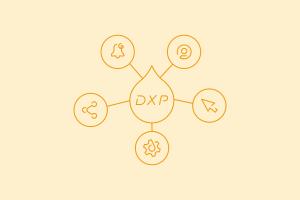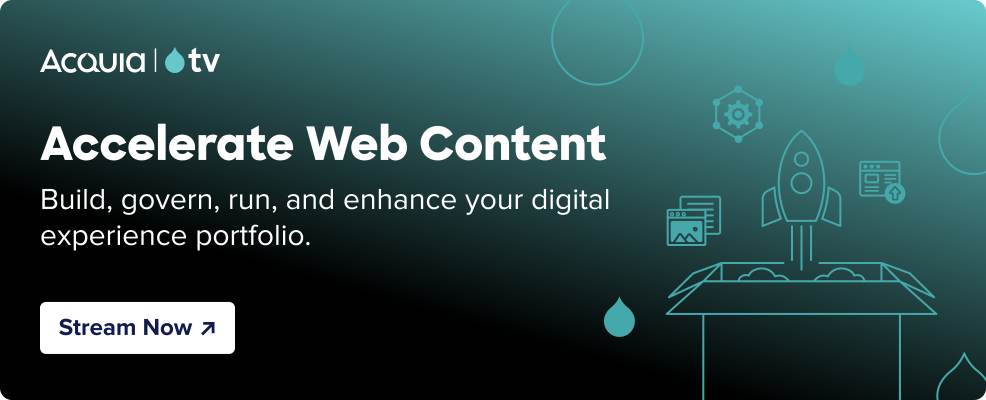
Collection
What Is a Digital Experience Platform (DXP)?

Collection :
This comprehensive guide explains what a digital experience platform (DXP) is and why brands need one to connect with customers across channels.
Consumers demand personalized and seamless brand experiences. They expect smart communications, fast service, and cohesive interactions across all digital channels.
But this caliber of experience isn’t easy to deliver. Marketing technologies address different pieces of the omnichannel puzzle, but stringing solutions together to work as a cohesive, data-driven marketing technology (martech) stack is often a challenge. That’s why industries and users of all kinds are turning to the next generation of marketing technology: the digital experience platform (DXP).
Ask 100 people what a digital experience platform is, and you’ll likely get 100 different takes. Even industry analysts like Forrester and Gartner define a digital experience platform slightly differently.
Here's how we define DXP at Acquia
A digital experience platform (DXP) is a collection of software that works together to power digital experiences from inception to delivery. It's a central hub from which to create, manage, deliver, and optimize content-driven experiences across all digital channels. |
A digital experience platform centralizes digital transformation by providing tools to understand customer data across channels and apply insights into content delivery. It connects various digital touchpoints like websites, apps, chatbots, and more, offering marketers an integrated ecosystem to manage.
To achieve this, DXPs pack a lot of functionality into one system. They combine the power of many popular technologies, such as e-commerce, campaign management, digital asset management (DAM), customer relationship management (CRM), customer data platforms (CDP), and personalization tools. Certain vendors provide more capabilities than others (and not all of the products mentioned are always included — or needed), but generally speaking, all DXPs must:
- Offer content management and media storage capabilities
- Enable the quick development of websites, portals, landing pages, or apps
- Collect and connect customer data across touchpoints and content using APIs
- Use data to facilitate the personalization of digital content for customers
- Measure content performance and user experience through analytics
How is a DXP different from a CMS?
A digital experience platform (DXP) is not the same as a traditional CMS, which manages website content like blogs and e-commerce pages. Organizations today require tools like DXPs to engage customers beyond just web properties.
Enter the DXP.
A DXP enhances a content management system by managing the entire user experience across all digital channels, not just a brand’s website. Called “the next evolution of the CMS,” DXPs are becoming a preferable alternative due to their capability to deliver content across multiple channels and automate distribution based on customer interactions.
Types of digital experience platforms
Marketing platforms never come in just one flavor; DXPs are no exception. Not only do DXPs vary in quality and capabilities from vendor to vendor, but there are actually two distinct types: an open DXP and a closed.
An open DXP integrates products from various vendors into a single system, allowing organizations to choose and integrate their preferred tools. Many open DXP vendors also offer ready-to-use integrations with vetted third-party products. A closed DXP is a self-contained platform with all components developed by the provider. While closed DXPs can integrate with external products, they are optimized for their own suite.
Choosing between open and closed DXPs depends on preference. Many prefer open DXPs for their flexibility and integration with different systems. Closed DXPs suit those with limited tech resources or preference for a single vendor, but they can be restrictive. With over 13,000 marketing technologies available, open DXPs focus on integrating the best tools seamlessly.
The four elements of a digital experience
Data and content are the foundation for any digital experience and thus the foundational elements of any digital experience platform. If you can’t create engaging content quickly and collect and analyze customer data, then you can’t deliver a digital experience. Any DXP vendor who doesn’t have content and data at the core of their definition and capabilities is not the right vendor for you.
1. Content: How we engage. The content acts as the “what” of the actual message. Whatever form it may come in (e.g., an article, social media post, digital ad, or e-book), it needs to be created and delivered. Content is the key to any experience, and enterprises need to be able to create massive amounts of it quickly, effectively, and at scale. A true DXP provides a single source of truth of content for the entire organization. Everyone — developers, IT, and marketing — must be able to rapidly create and update content and to do so without advanced technical skills. That content needs to be discoverable, shareable, and reusable across any touchpoint (web, mobile, email) or modality (screen, voice, gestures) so that it can be created once and published to any channel.
2. Data: How we understand. Data answers the essential questions: who your customers are, where they’re interacting, and how they prefer to engage. All of this makes up customer understanding, which tells you exactly the type of content to use for customer engagement. A true DXP provides a single source of truth for data via real-time 360° customer profiles. It must open up data and make it accessible to everyone across an organization through pre-built connectors that integrate to both new, legacy, and offline channels. That accessibility allows any team who needs it to view data analytics and report on it without creating bottlenecks.
A true DXP will also automatically stitch together profiles and segments across channels, devices, and systems, as well as deduplicate and cleanse that data for a single view of customer engagement and interactions across online and offline channels.
3. Machine learning: True intent at scale. Machine learning (ML) is really just a means to an end: identifying and delivering true customer insight at scale. ML models can stitch together customer data and activities and accelerate operations. Machine learning algorithms are used to identify customer preferences, what segment they belong in, and, most importantly, what they’re likely to do next based on their behaviors. It provides true intent — an understanding of which customers tend to buy online, who your highest value customers are, and predictive models to understand which channels and times of day they’re most likely to engage.
So, once you’ve applied machine learning to the data, you’ve achieved the third component of a digital experience platform: insight at scale. As your business needs continue to expand to new regions, channels, and systems — all of which are gathering new data on your customers — machine learning can enhance the data and more effectively determine which content should go to which customer.
4. Orchestration: Connecting the pieces. The fourth element in this admittedly simplified breakdown is orchestration. You might call this customer journeys, journey mapping, automation, or the like, but they all fall under the same umbrella. You have data on a customer and have created content for them. You’ve used machine learning to gain forward-looking customer insights. The last step of the workflow: producing a digital experience, which means being able to create a cohesive customer journey. Each touchpoint needs to be optimized to make the most of that particular moment without disruption. A DXP enables teams to personalize experiences and create customer journeys without having to use code. Teams should also be able to easily duplicate successful campaigns and localize to help drive engagement across distributed organizations. Combined with content, data, and machine learning, orchestration puts engagement into motion to deliver the right message to service every aspect of the digital experience: websites, applications, channels, modalities, and whatever else drives customers toward their preferred solution. It helps businesses know what to deliver next and instills confidence that they’re taking the next best action.
The result for a business that invests in the right DXP (and has the organization’s commitment and a process to get there) is the holy grail: a self-guided customer journey.
DXP and DAM
As we said earlier, content is the backbone of every digital experience. But getting this content out into the world and across all of a brand’s various digital channels is challenging. That’s why many organizations leverage a digital asset management solution as part of their DXP.
With a DAM component, organizations can search and access content without leaving the DXP, helping teams move more quickly. It also ensures that only up-to-date, approved, and on-brand assets make their way into a brand’s digital experience. Teams can use dynamic resizing tools to adjust the images they pull from the DAM system, convert file formats on the fly, import metadata for search engine optimization (SEO), and much more. A strong digital experience is contingent on so much that happens behind the scenes — and a DAM system is often step one in setting up a solid, forward-looking digital marketing strategy.
When to use a digital experience platform
With so many vendors making a case for their particular solution, it’s tough to know when a DXP is really needed. This timing is different for every organization (and resources certainly play a role), but many organizations invest in a DXP when they’re looking to achieve objectives like the following:
Create comprehensive strategies
Organizations with long-term omnichannel marketing goals should consider a DXP. As strategies become more ambitious, understanding their effectiveness becomes challenging. A DXP connects customer data across all digital touchpoints, helping marketers execute strategies with greater speed, agility, and confidence.
Build personalized experiences
Achieving personalization at scale is challenging without technology. A DXP solves this by combining all data and digital tools into one platform. This unifies customer insights, enabling smarter personalization tactics and resulting in more relevant customer experiences.
Impactful campaign management
Campaigns require fast insights and actions. A DXP consolidates data from various sources for rapid analysis.
But that’s just part of the equation. Campaigns require ongoing optimization and A/B testing, which can leave marketers stuck waiting for developers to create or update landing pages for them. A DXP gives marketers the tools they need to make these updates and push changes live all on their own.
Benefits of a DXP
To learn more about the relationship between marketing and customer experience (CX) in creating omnichannel success, we surveyed 3,000 consumers and 300 marketers in our 2023 CX Trends Report. The report found that 79% of consumers expect organizations to have brand and messaging consistency across all their digital channels. And that’s a fair expectation to have! But, as organizations adopt more and more technologies, creating that cohesive brand experience across channels doesn’t get easier. A DXP is specifically designed to address this by centralizing the technologies responsible for delivering content wherever it needs to go. With the right DXP in place, organizations receive several benefits:
- An integrated approach to data and content for smarter budget allocation, more informed campaign optimization, and faster decision-making
- Smarter personalization through machine learning and cross-channel insights into customer characteristics, preferences, content consumption, and more
- An open architecture solution for customizable and easy integration of existing and new cutting-edge marketing tools
- Turnkey content creation methods for more agile digital marketing and less reliance on web developers
- A 360° view of the customer to effectively cleanse, manage, and operationalize online and offline data
- Governance controls to keep content on-brand, protect customer privacy, and mitigate risk
DXP for the future
In a digital-first world, a positive digital experience is key to customer satisfaction. While some brands manage with basic marketing technologies, evolving digital strategies benefit from a Digital Experience Platform (DXP). An open, composable DXP like Acquia allows flexibility, enabling diverse integrations and building a digital future that is accessible and secure.
To learn how Acquia can help spur your digital transformation and get you on the path to delivering on the omnichannel expectations of modern consumers, request a demo of our solutions.



